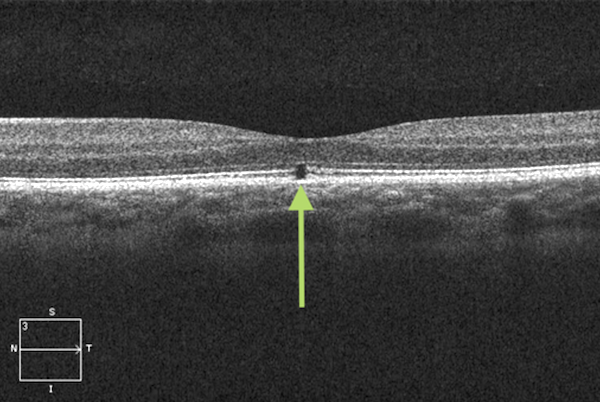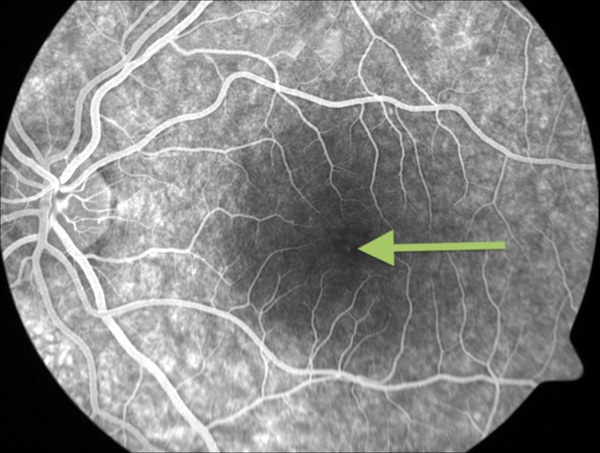Home
A comprehensive resource for safe and responsible laser use
US: Teen suffers central blind spot after older brother aims 50 mW laser at him
02 Mar 2015 -- Categories: Non-aviation incidents | Eye effect or injury
A 13-year-old was injured by a $24.11 green laser pointer purchased on the Internet, claimed to be 50 milliwatts, after his older brother aimed the beam into his left eye from 4 feet away for approximately 1 second. According to a case report published March 1 2015, the boy noticed a blind spot immediately after the exposure and for months thereafter, although normal vision appeared to return after two years.
Tests at the Walter Reed National Military Medical Center Ophthalmology clinic one week after exposure showed no lesion visible to the eye (slit lamp exam) or with fundus photographs. However, Amsler grid tests indicated a central field visual defect in the left eye. Using more sensitive optical coherence tomography (OCT), a 56-micron disruption area was seen:

Intravenous fluorescein angiography displayed a barely detectable foveal window defect:

The diagnosis was that the blind spot was likely to remain, unchanged, and that treatment would not be necessary or effective,
Check-ups after two months and six months showed no change. However, after two years the teen no longer complained about a blind spot, and Amsler grid results were normal — despite OCT still showing the disruption area.
In an article describing the case, the authors concluded: “Our case represents a somewhat unique instance, where a moderate-powered [Class] 3B green laser produced visually significant retinal injury without correlating fundus findings on physical examination. The injury was only detectable by OCT and questionably fluorescein angiography…. Our case demonstrates the unpredictability of retinal findings in laser exposure in this power range, and the importance of OCT when evaluating patients who present with symptoms following dangerous laser exposures… If powerful lasers continue to be marketed as benign lights and their access to adolescent hands remains just a few keystrokes away, more ocular injury of this nature can be expected.”
From Military Medicine, Volume 180, Issue 3, 1 March 2015, Pages e378–e380, https://doi.org/10.7205/MILMED-D-14-00420
Tests at the Walter Reed National Military Medical Center Ophthalmology clinic one week after exposure showed no lesion visible to the eye (slit lamp exam) or with fundus photographs. However, Amsler grid tests indicated a central field visual defect in the left eye. Using more sensitive optical coherence tomography (OCT), a 56-micron disruption area was seen:

Intravenous fluorescein angiography displayed a barely detectable foveal window defect:

The diagnosis was that the blind spot was likely to remain, unchanged, and that treatment would not be necessary or effective,
Check-ups after two months and six months showed no change. However, after two years the teen no longer complained about a blind spot, and Amsler grid results were normal — despite OCT still showing the disruption area.
In an article describing the case, the authors concluded: “Our case represents a somewhat unique instance, where a moderate-powered [Class] 3B green laser produced visually significant retinal injury without correlating fundus findings on physical examination. The injury was only detectable by OCT and questionably fluorescein angiography…. Our case demonstrates the unpredictability of retinal findings in laser exposure in this power range, and the importance of OCT when evaluating patients who present with symptoms following dangerous laser exposures… If powerful lasers continue to be marketed as benign lights and their access to adolescent hands remains just a few keystrokes away, more ocular injury of this nature can be expected.”
From Military Medicine, Volume 180, Issue 3, 1 March 2015, Pages e378–e380, https://doi.org/10.7205/MILMED-D-14-00420